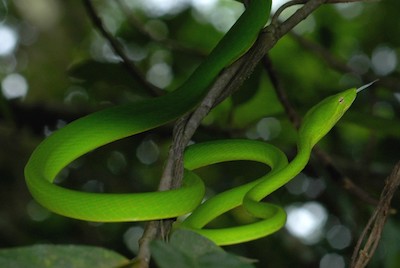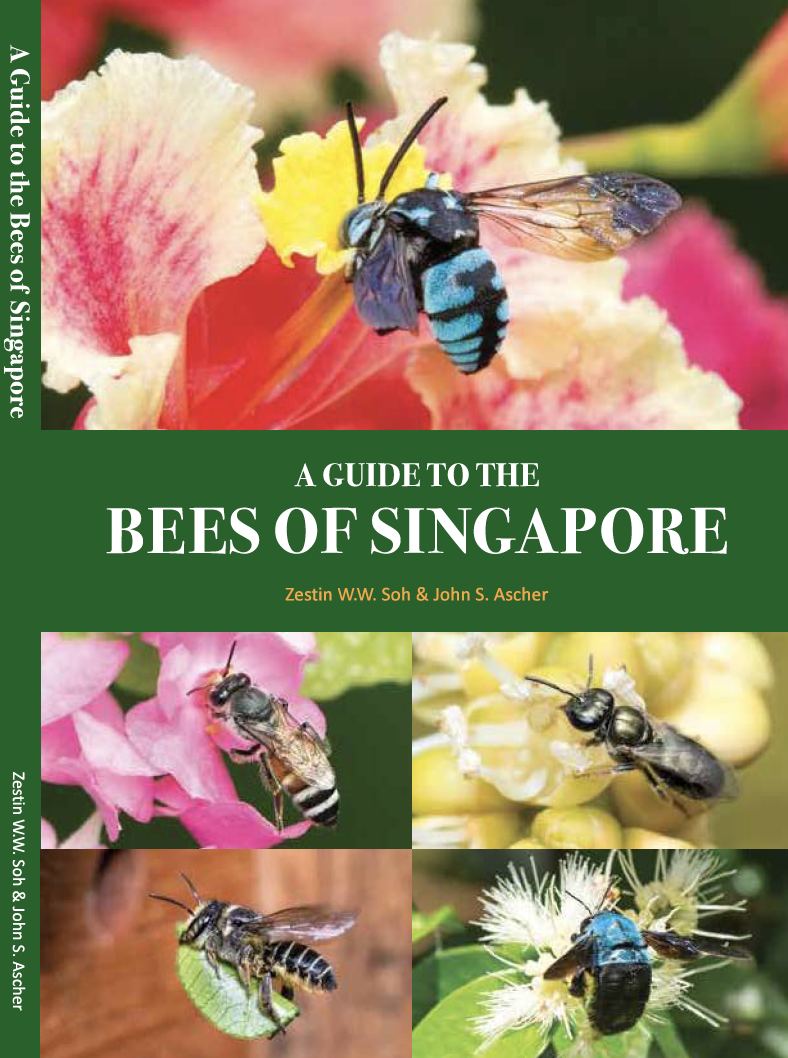Have An “Ox-spicious” New Year
According to the Chinese zodiac, we will usher in the Lunar New Year of the Ox this year. While you will not find any wild oxen on our shores, you can find some flora and fauna that appear to be related to cattle in our green spaces!
Some earned their ox or cow-related names from their resemblance to certain parts of the animal while others share characteristics with cattle. Get to know five of these flora and one fauna here:
-
Oxblood Ginger
The eye-catching bright blood red undersides of the Oxblood Ginger leaves gives the plant its name.
The Oxblood Ginger (Costus erythrophyllus) is a type of shrub that can grow up to 60 cm tall. It produces foliage that is blueish green and bright while blood red below the leaves, thus giving it its common name.
The flowers of this plant are large and range from red to slightly pale pink in colour. Its stamens grow 4 to 5 cm long with a pinkish white anther of about 1 cm long. While it is grown in Singapore mainly for its ornamental purpose, this shrub is said to have some medicinal properties for the treatment of diabetes.
2. Cow’s Udder Plant
The interestingly-shaped fruit of the Cow’s Udder Plant is inedible and toxic when ingested.
The Cow’s Udder Plant (Solanum mammosum) is also known as the Nipple Fruit. And looking at the fruit of this perennial herbaceous shrub, it is easy to see why: the proximal end of its fruit strongly resembles a cow’s udder.
The fruits ripen from green to yellow and then orange. They are inedible and toxic when ingested. This makes the fruit a good cockroach poison and repellent against insects like leaf cutter ants. Usually grown for ornamental purposes, the fruits also symbolise good luck and some people use them as festive decoration during the Lunar New Year and as religious offerings.
3. Creeping Ox-eye
While the Creeping Ox-eye produces pretty yellow flowers, this shrub is considered a highly invasive alien species in tropical areas due to its fast growth.
You would have probably seen the Creeping Ox-eye (Sphagneticola trilobata) in our parks or gardens. This creeping perennial shrub can grow up to 70 cm tall and forms dense mounded mats over the ground. It produces small pretty flowers all year round, that are yellow and disc-shaped, and are said to resemble an ox’s eye.
While it has ornamental purposes, this plant is considered one of the top 100 invasive alien species in tropical areas due to its incredibly fast growth and the difficulty to eradicate it. It grows well in full sun or semi-shaded conditions and is highly adaptable and tolerant of various soil types.
All parts of this plant contain a compound known as ivalin that is toxic to mammals when ingested. Gardeners are also advised to avoid using trimmings of the plant to make compost as live and dead plant matter contain compounds that can inhibit growth and germination of other plants.
4. Sea Cow
The Dugong (Dugong dugon) is also known as Sea Cow, getting this name from its grazing habit on seagrass in shallow coastal waters just like a cow on land will do so. It is believed the Dugong feeds during the night and rests in deeper water during the day.
The Dugong is usually found in coastal seas and at the mouths of rivers, usually travelling alone, but sometimes in pairs or in a small group. It can be found in Singapore waters, and while sightings of this Critically Endangered species are rare, it can occasionally be spotted near Pulau Ubin, Pulau Tekong, Changi and along East Coast Park.
These creatures have been injured because of propellers of motorboats and when they accidentally get entangled in fishing nets. Also, pollution and extensive land reclamation can destroy the beds of seagrasses which is their main source of food.
5. Cow Grass
Cow Grass can be found all across our island, functioning as ground cover for large open spaces such as plots of land by roads or on soccer fields.
Cow Grass (Axonopus compressus) is frequently grown in Singapore. It grows well in moist soil and in humid areas, originating from South America and Mexico. It is often used as pasture for animals like cows to graze on.
It is also a good ground cover to prevent soil erosion and is used to cover large spaces, like plots of land by the roads and soccer fields. This grass forms a dense mat on the ground surface, rarely growing to heights of over 15 cm tall. Each leaf blade is broadly oblong, usually growing no more than 1 cm in width.
6. Cow’s Horn Euphorbia
Do these wavy, horned branches resemble cow horns?
Native to Kenya, Swaziland and Mozambique, the Cow’s Horn Euphorbia (Euphorbia grandicornis) grows best in hot, dry soils formed from clay, sand or grit deposits. It should be planted in an area that is protected from strong winds. This is because strong winds will cause their barbed stems to knock against each other and can cause injuries to the plant.
It has angular stems that are winged on three to four corners and it gets its name from the way its wavy, horned branches, that often come in pairs, resemble cow horns. With its uniquely-shaped stems, It is grown in Singapore as an ornamental. Considered low maintenance with its preference for full sun and little water, this plant produces a white sap that can irritate the eyes and skin.
Learning More
If you are heading to our green spaces, do the right thing and be socially responsible. Maintain a safe distance from other park goers and keep to not more than eight persons in a group, with no intermixing between groups. Always wear a mask except when you are engaged in strenuous exercise or when consuming food, drink or medication.
Do check out the visitorship levels of our parks using our safe distancing portal before you head down and avoid the ones with high visitorship. Learn about some simple do’s and don’ts when visiting our Nature Reserve and Nature Parks here.
Visit NParksSG, our refreshed YouTube Channel that serves as a one-stop repository for close to 300 video resources. It also provides you a platform for existing and future digital outreach including DIY gardening and related crafts, virtual tours of our green spaces, and livestream events.
For more information about the flora and fauna found in Singapore, please visit NParks Flora and Fauna Web.
If you like what you read, follow us on Facebook, Instagram and Telegram to get the latest updates.
Text by Melissa Lee


.ashx?h=400&w=533)
.ashx?h=400&w=411)
.ashx?h=400&w=600)
.ashx?h=400&w=600)
.ashx?h=400&w=267)
.ashx?h=400&w=600)
.ashx?h=400&w=602)
.ashx?h=400&w=266)


.ashx)
Have views or comments on this article? Let us know via this form. If you would like to give us feedback on any other areas relating to our parks and gardens, please submit via https://www.nparks.gov.sg/feedback